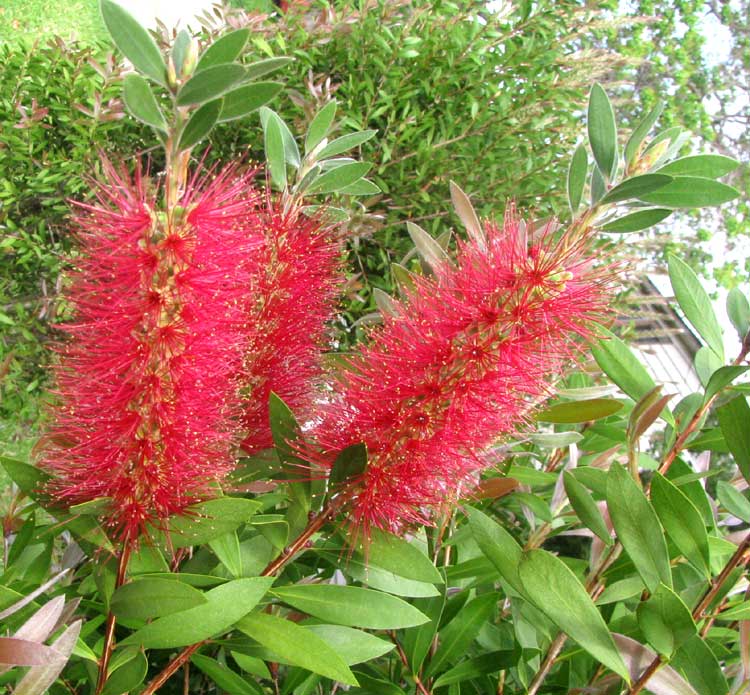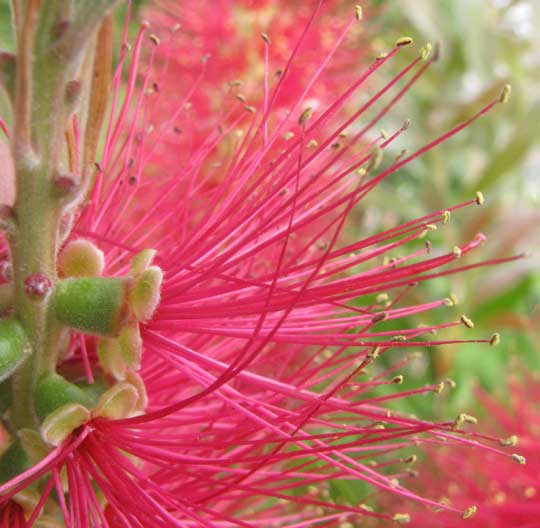Excerpts from Jim Conrad's
Naturalist Newsletter

from the April 1, 2011 on-the-road Newsletter with notes and pictures from Baton Rouge, Louisiana, USA
RED BOTTLEBRUSH ABLAZE
Not far from the big oak, overflowing onto a busted sidewalk in front of an abandoned house, grew a dense, much branched, head-high bush with blazing bunches of fuzzy-looking red flowers strangely clustered in the middle of numerous spindly branches, as shown bove.
The fuzzy zones were composed of many closely packed flowers and the fuzz itself was made up of long, red stamens. A close-up of a flower's stamen burst is seen below:

Note the tiny anthers at the tip of each of the stamen's scarlet filaments, each anther splitting to release yellow pollen.
In warm parts of the country this is a commonly planted shrub or small tree known as Bottlebrush. It's a member of the genus CALLISTEMON, which contains about 34 species, all endemic to Australia. Bottlebrushes are members of the Myrtle Family, the Myrtaceae. With so many species to deal with, and so much hybridization and so many cultivars, it's hard to say which bottlebrush this is. However, it matches pictures and descriptions of the commonly planted Callistemon citrinus, known variously as the Lemon Bottlebrush, Crimson Bottlebrush, and Red Bottlebrush. That species is hardier than most bottlebrushes.
Hummingbirds are known to love its flowers.